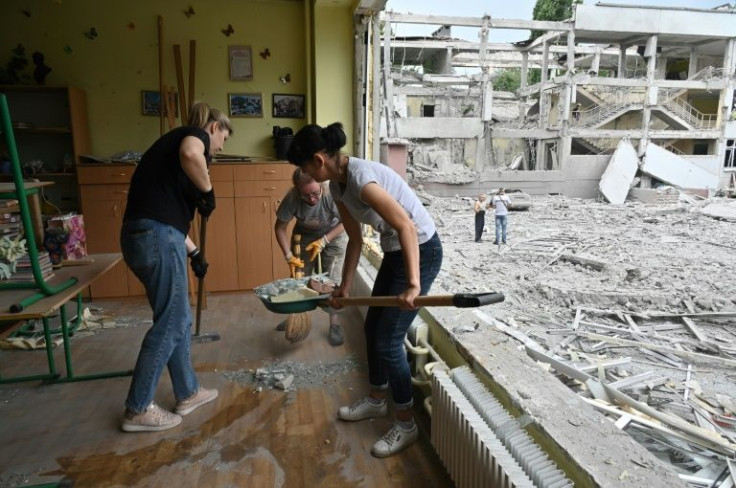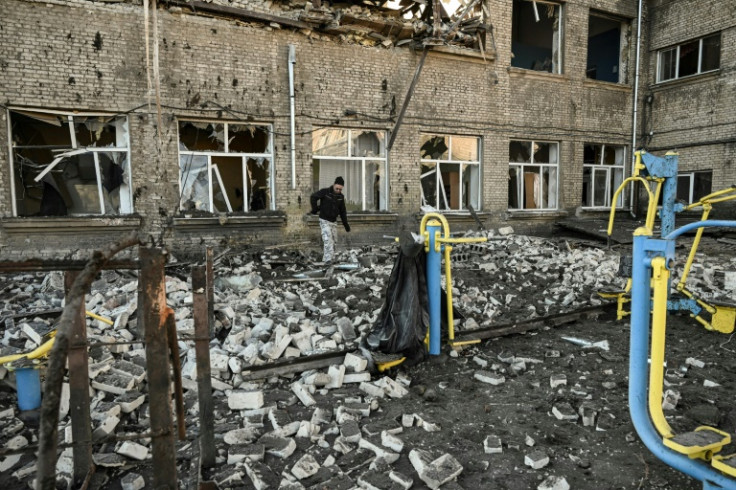3D-Printed School Being Built In Ukraine, The First One Across Europe

KEY POINTS
- The construction of the 3D-printed section of the school is expected to be completed by early June
- Project organizers hope to rebuild war-damaged infrastructure with 3D-printing technology
- A European bank estimates Ukraine would need $50 billion a year for five years to fund its reconstruction
Europe's first 3D-printed school is taking shape in the city of Lviv in Ukraine amid the ongoing Russian invasion.
The project was organized by the humanitarian group Team4UA and uses equipment from the Danish 3D-printing construction company COBOD International, Radio Free Europe/Radio Liberty (RFE/RL) reported.
Henrik Lund-Nielsen, COBOD International's founder, told the BBC that 99% of the concrete used in their mix for the construction of the Ukrainian school is sourced within the country.
Lund-Nielsen claimed that the use of 3D-printing technology makes the project "much faster and much cheaper" than those that use conventional construction methods.
"The first project people will do, they will typically not save, but once they get the hang of it, they do it faster and faster, and then they save money," he explained.
The primary school will be a combination of 3D-printed sections and spaces built by hand using wood and other materials.
The 3D-printed part of the building is expected to be completed early next month, while the school is scheduled to be fully completed by late 2023.
It is reportedly intended to be the first of many such facilities that organizers hope to build across Ukraine.
Project organizers said their long-term goal is importing several printers and incorporating the rubble of buildings destroyed during the Russian-led war into the toothpaste-like concrete used for printing.
The Ukrainian government said at least 277 schools had been destroyed in the Russian invasion, leaving thousands of children across the war-torn country without classrooms.
Aside from schools, the war turned many other Ukrainian buildings and infrastructure, such as residential buildings, private establishments and government facilities, into rubble.
According to the latest Regional Economic Prospects report by the European Bank for Reconstruction and Development (EBRD), Ukraine would need around $50 billion a year of foreign capital inflows for five years to fund its massive reconstruction program.
To recover within five years, Ukraine would also need to grow its economy by 14% annually during that period, which means raising its average GDP to $225 billion, the report said.
EBRD underscored the importance of public-private partnerships in Ukraine's post-war recovery.
"Private and public investment tend to be highly complementary, in the post-conflict situation and more generally. Beyond financing, the private sector contributes much-needed technological expertise, management know-how and a focus on cost-efficiency," the European financial institution said.
Meanwhile, several Central European companies are already seeking a foothold for future reconstruction work in the war-torn country.
The Czech government has pledged to spend $23.5 million annually until 2025 to support companies seeking to work in Ukraine, Reuters reported. It is also helping its home-grown companies connect with Ukrainian officials through regional trade missions.
"Companies and governments realize that the Ukrainian market will be a great opportunity for the future," Tomas Kopecny, the Czech government envoy for Ukraine reconstruction.
Reconstructing Ukraine could also spur economic growth in its neighboring countries, such as Poland, according to Polish bank Pekao SA.
Pekao SA estimated that Ukraine construction could boost the Polish economy by up to $45.6 billion, or around 3.8% of its GDP.

© Copyright IBTimes 2024. All rights reserved.












